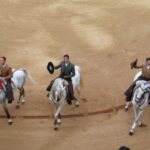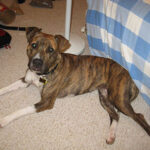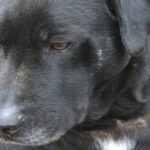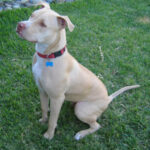The American Staffordshire, also known as the Pit-Bull, has garnered a reputation for being a fierce, intolerable, violent animal, capable of the most horrendous atrocities known to man or beast.
Although the American Staffordshire’s reputation is not without merit, it is false to assume that the pit-bull is in any way different than any other large, work dog, which was bred to protect one’s property or work in a field.
The fact is that any dog, no matter how it was bred, is capable of attacking a human being. Yet, the reasons for dog attacks has very little to do with the dog itself and everything to do with human being’s attitudes and misunderstandings about dogs.
Human beings tend to believe that family pets, such as dogs, communicate the same way that human beings do. This is a terrible misconception. Dogs are “pack” animals which means that, unless there is a clear indication to the dog that the owner is the leader of the pack, the dog or dogs will always be fighting for superiority within that pack. This is the way wolves fight to determine the leader within any given pack. This is also the way wolves figure out which members of the pack receives the choice cuts of meat. Family dogs are nothing more than domesticated wolves.
Once a leader is established, the pack will protect that leader as long as the leader maintains his control over the pack. When taking these facts about dogs into account, it’s obvious how a ferocious human leader could train dogs to fight. Dogs do not hate. They protect and serve – – sometimes to the point of killing other dogs or killing human beings.
Unfortunately for the American Staffordshire, the myths surrounding them as a breed has turned their lovable faces into those of a four-legged boogeyman, and has led to some calls, albeit rare, of extermination.
The most popular myth involves the pit-bull’s “lock-jaw”. This is not true. There is no locking mechanism in a pit-bull’s jaws. A pit-bull’s jaws are no different than other dogs and numerous scientific experiments have proven it.
Not only do pit-bulls not have lock-jaws, but there is no evidence that pit-bulls bite human beings more than any other breed. First, most dogs referred to as pit-bulls are not true American Staffordshires but are, instead, a mixed breed with some pit-bull influence in their genes. This makes it very difficult to determine whether or not a dog that has bitten a human being is an American Staffordshire, or a German shepherd, or a Labrador or a mix of different breeds of dogs. Second, the American media has so villianized pit-bulls that every pit-bull attack is broadcast on television while all other dog attacks are rarely mentioned.
The media’s influence has only fueled myths like those regarding the lock-jaw and others such as the belief that pit-bulls’ brains swell to the point where they go crazy. This same myth was prevalent when the Doberman pinscher was the hated, evil breed.
The truth about why American Staffordshires make good fighting dogs has more to do with their mentality than with something inherent within their breed. Pit-bulls are highly susceptible to loyalty and very much attached to whomever they feel is their leader. Because of that, the leader must always maintain a sense of control, the animal instinct is to take control unless control is present, and understand that the main focus of the pit-bull is to protect its leader if it feels that the leader is worth protecting.
What this means is that responsible dog owners don’t force their animals to fight. They also walk their dogs on leashes and with muzzles. They feed their dogs regularly and allow their dogs to do what they do best – – protect the home and family.
Only then, will the myths surrounding pit-bulls float away much like the myths that at one time surrounded the Doberman pinscher, the Rottweiller, and the German shepherd.





